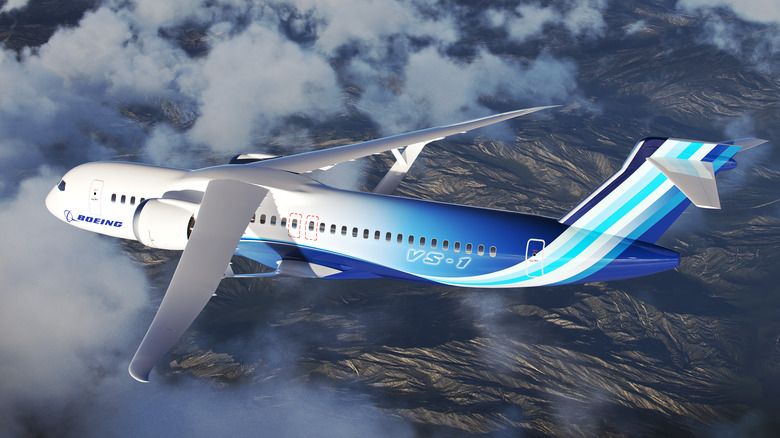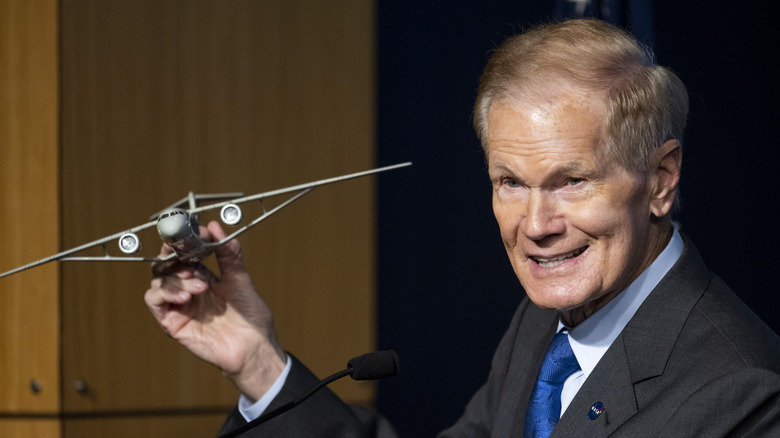NASA And Boeing Team Up On Greener Tech You Don't Need To Be An Astronaut To Enjoy
NASA is best known for its out-of-this-world ventures but yesterday, in Washington, D.C., NASA Administrator Bill Nelson announced a project a little more down to Earth. In cooperation with The Boeing Company and other industry partners, a combined total of over 1.1 billion dollars will be dedicated to designing, building, and flying a next-generation single-aisle airliner. The goal is to create a much more fuel-efficient plane that could go into service as early as the 2030s.
NASA is investing $425 million into the project. After the program wraps up, NASA won't have even a single airplane to show for it. Instead, the investment represents the importance of reducing emissions from air travel, which is a major contributor to climate change — something NASA is very much focused on monitoring and improving. In a press release, NASA stated that single-aisle aircraft account for close to half of worldwide aviation emissions today. These types of aircraft are extremely common, particularly for passenger air travel.
This project aims to reduce emissions by as much as 30% compared to the most efficient comparable aircraft in use today. Ultimately, both NASA and the aviation community as a whole have committed to achieving net-zero carbon emissions by 2050. This joint investment represents an important step along that path, though it will only be one of many changes in the decades to come. So what exactly is this new technology going to be, and how is it expected to work?
There's some ... thing on the wing of the plane
The most obvious change to the aircraft is the design of the wings, which are called Transonic Truss-Braced Wings (TTBW). First unveiled by Boeing in 2019, the TTBW design features wings that sit much higher on the plane than today's commercial jetliners. If you've recently flown on, say, a Boeing 737, you may recall that in the event of an emergency, there are exits over the wings of the aircraft. But on a TTBW plane, the wings are joined to the top of the fuselage, well above the windows and exit doors.
The wingspans of these planes will be much greater than today's single-aisle airliners—closer to 170 feet than the 737's 117-foot wingspan (via Boeing). While they're much longer, these wings are also much lighter, and therefore have to be supported by trusses, which lends the TTBW its name. Boeing has been studying this concept for about 10 years already in an effort to reduce both emissions and noise while also improving performance.
In addition to the innovative wing design, NASA and Boeing also intend to innovate other systems including propulsion, materials, and systems architecture, Boeing said in their own press release. Right now, NASA intends to finish testing for this project later this decade, which means you could be casually boarding a TTBW plane in the 2030s. Of course, NASA isn't always known to stay on schedule. Even so, cleaning up the skies is a worthy goal, and, for everyone here on the ground, a welcome breath of fresh air.

